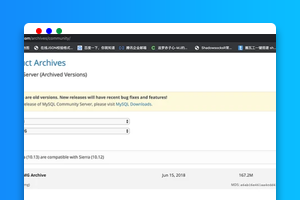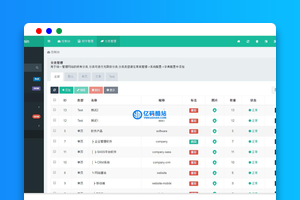
Vuex 是一把双刃剑。如果使用得当,使用 Vue 可以使你的工作更加轻松。如果不小心,它也会使你的代码混乱不堪。
使用 Vuex 之前,你应该先了解四个主要概念:state、getter、mutation 和 action。一个简单的 Vuex 状态在 store 中的这些概念中操作数据。 Vuex 中的映射提供了一种从中检索数据的好方法。
在文中,我将演示如何映射 Vuex 存储中的数据。如果你熟悉 Vuex 基础,那么这些内容将会帮你编写更简洁、更便于维护的代码。
本文假设你了解 Vue.js 和 Vuex 的基础知识。
Vuex 中的映射是什么?
Vuex 中的映射使你可以将 state 中的任何一种属性(state、getter、mutation 和 action)绑定到组件中的计算属性,并直接使用 state 中的数据。
下面是一个简单的 Vuex store 例子,其中测试数据位于 state 中。
import Vue from 'vue'
import Vuex from 'vuex'
Vue.use(Vuex)
const store = new Vuex.Store({
state: {
data: "test data"
}
})
如果要从 state 中访问 data 的值,则可以在 Vue.js 组件中执行以下操作。
computed: {
getData(){
return this.$store.state.data
}
}
上面的代码可以工作,但是随着 state 数据量的开始增长,很快就会变得很难看。
例如:
import Vue from 'vue'
import Vuex from 'vuex'
Vue.use(Vuex)
const store = new Vuex.Store({
state: {
user: {
id:1,
age:23,
role:user
data:{
name:"user name",
address:"user address"
}
},
services: {},
medical_requests: {},
appointments: {},
}
}
})
要从处于 state 中的用户对象获取用户名:
computed: {
getUserName(){
return this.$store.state.user.data.name
}
}
这样可以完成工作,但是还有更好的方法。
映射 state
要将 state 映射到 Vue.js 组件中的计算属性,可以运行以下命令。
import { mapGetters } from 'vuex';
export default{
computed: {
...mapState([
'user',
])
}
}
现在你可以访问组件中的整个用户对象。
你还可以做更多的事,例如把对象从 state 添加到 mapState 方法。
import { mapGetters } from 'vuex';
export default{
computed: {
...mapState([
'user',
'services'
])
}
}
如你所见,这要干净得多。可以通过以下方式轻松访问用户名:
{{user.data.name}}
services 对象和映射的许多其他的值也是如此。
你注意到我们是如何将数组传递给 mapState() 的吗?如果需要为值指定其他名称,则可以传入一个对象。
import { mapGetters } from 'vuex';
export default{
computed: {
...mapState({
userDetails:'user',
userServices:'services'
})
}
}
现在可以通过简单地调用 userDetails 来引用 user。
何时映射整个 state
根据经验,仅当 state 中有大量数据,并且组件中全部需要它们时,才应该映射。
在上面的例子中,如果我们只需要一个值(例如 username),则映射整个用户对象就没有多大意义。
在映射时,整个对象将会全部加载到内存中。实际上我们并不想继续把不需要的数据加载到内存中,因为这将是多余的,并且从长远来看会影响性能。
映射 getter
映射 getter 的语法与 mapState 函数相似。
import { mapGetters } from 'vuex'
export default {
computed: {
...mapGetters([
'firstCount',
'anotherGetter',
])
}
}
与映射 state 类似,如果你打算使用其他名称,则可以把对象传递给 mapGetters 函数。
import { mapGetters } from 'vuex'
export default {
computed: {
...mapGetters([
first:'firstCount',
another:'anotherGetter',
])
}
}
映射 mutation
映射 Mutation 时,可以在用以下语法来提交 Mutation。
this.$store.commit('mutationName`)
例如:
import { mapMutations } from 'vuex'
export default {
methods: {
...mapMutations([
'search', // 映射 `this.increment()` 到 `this.$store.commit('search')`
// `mapMutations` 也支持 payloads:
'searchBy' // 映射 `this.incrementBy(amount)` 到 `this.$store.commit('searchBy', amount)`
]),
...mapMutations({
find: 'search' // 映射 `this.add()` 到 `this.$store.commit('search')`
})
}
}
映射 action
映射 action 与映射 mutation 非常相似,因为它也可以在方法中完成。使用映射器会把 this.$store.dispatch('actionName') 绑定到映射器数组中的名称或对象的键。
import { mapActions } from 'vuex'
export default {
// ...
methods: {
...mapActions([
'increment', // 映射 `this.increment()` 到 `this.$store.dispatch('increment')`
// `mapActions` 也支持 payloads:
'incrementBy' // 映射 `this.incrementBy(amount)` 到 `this.$store.dispatch('incrementBy', amount)`
]),
...mapActions({
add: 'increment' // 映射 `this.add()` 到 `this.$store.dispatch('increment')`
})
}
}
总结
看到这里,你应该能够学到:
-
对 Vuex 中的映射是如何工作的以及为什么要使用它有了深刻的了解
- 能够映射 Vuex store 中的所有组件(state、 getter、 mutation、action)
-
知道什么时候应该映射 store
英文原文地址:https://blog.logrocket.com/a-complete-guide-to-mapping-in-vuex/
作者:Moses Anumadu
Vuex中映射的完整指南
—–文章转载自PHP中文网如有侵权请联系admin#tyuanma.cn删除
PHP中如何使用cURL实现Post请求
本文永久链接地址:https://www.ymkuzhan.com/1641.html

 成为VIP
成为VIP








